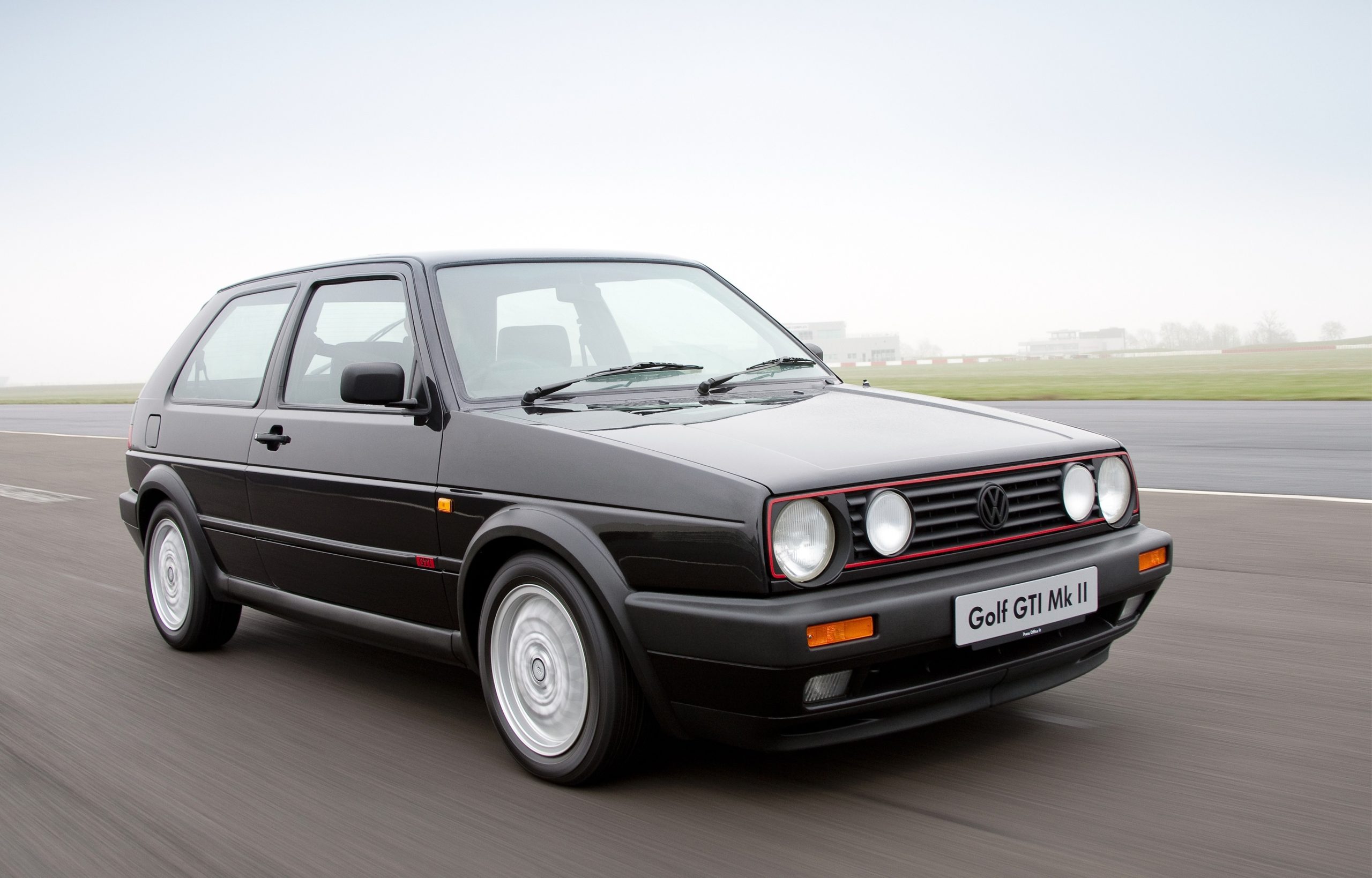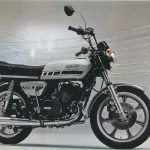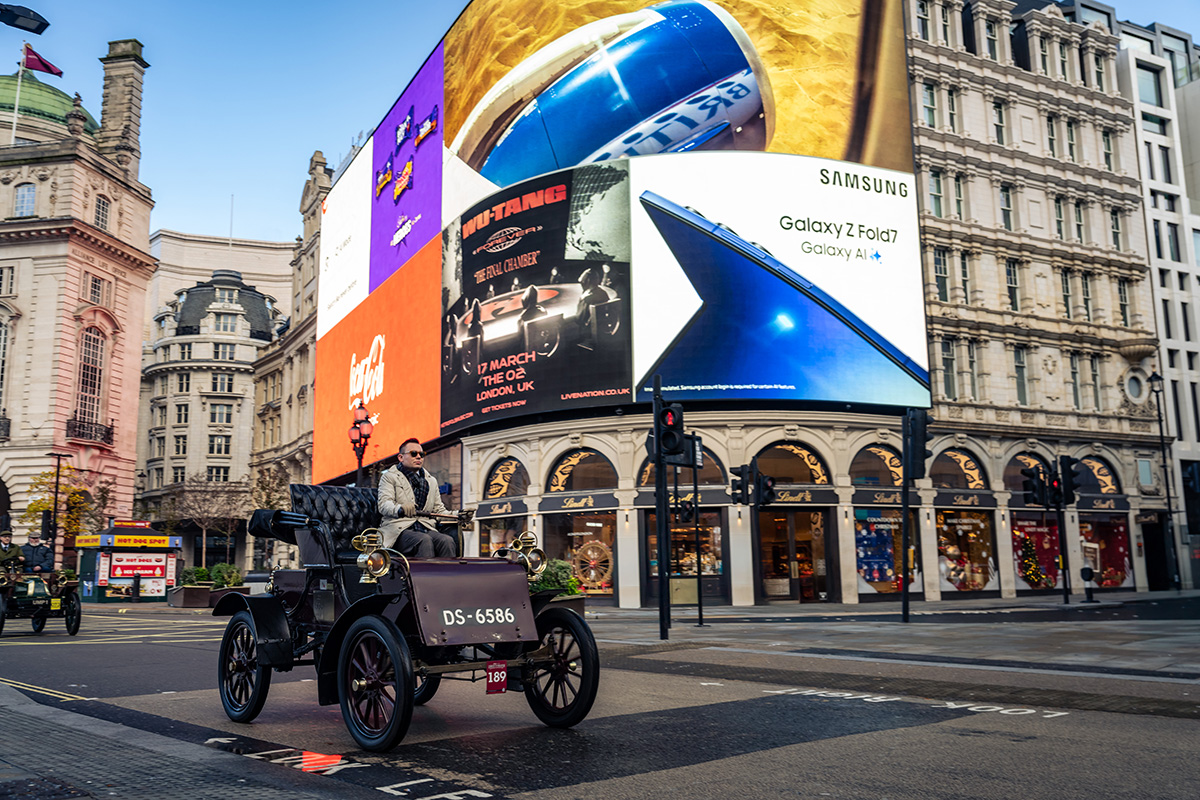Author: Alisdair Suttie
Photography: Volkswagen
Difficult second albums are the stuff of notorious legend, yet Volkswagen moved harmoniously from its genre-defining original Golf GTI right into the second generation version. It helped that by 1984 when the Mk2 GTI went on sale, it was an intrinsic part of the new Golf’s range rather than buyers having to wait for a performance model. Another helping hand came from the economic boom of the period and massive desire for hot hatches, so the Mk2 GTI was in just the right place at the right time.
Volkswagen did itself plenty of favours by not tampering too much with the basic Golf formula established with the Mk1. While the Mk2 was bigger in every direction, it retained clean, taut lines styled by Herbert Schäfer. Unlike the earlier GTI, the Mk2 could be had in three- and five-door body styles, with the latter added a year after the car’s launch. However, there was still a focus on performance and the Mk2 started out with a 112bhp 1.8-litre four-cylinder engine with Bosch K-Jetronic fuel injection and an eight valve cylinder head. This later changed to a Digifant system in 1987 for the 8v, but a year before that Volkswagen introduced a much bigger change with the new 16-valve model. It kicked out 129bhp to begin with due to its catalytic convertor restricting power, but that improved to 139bhp when the catalytic convertor was removed.
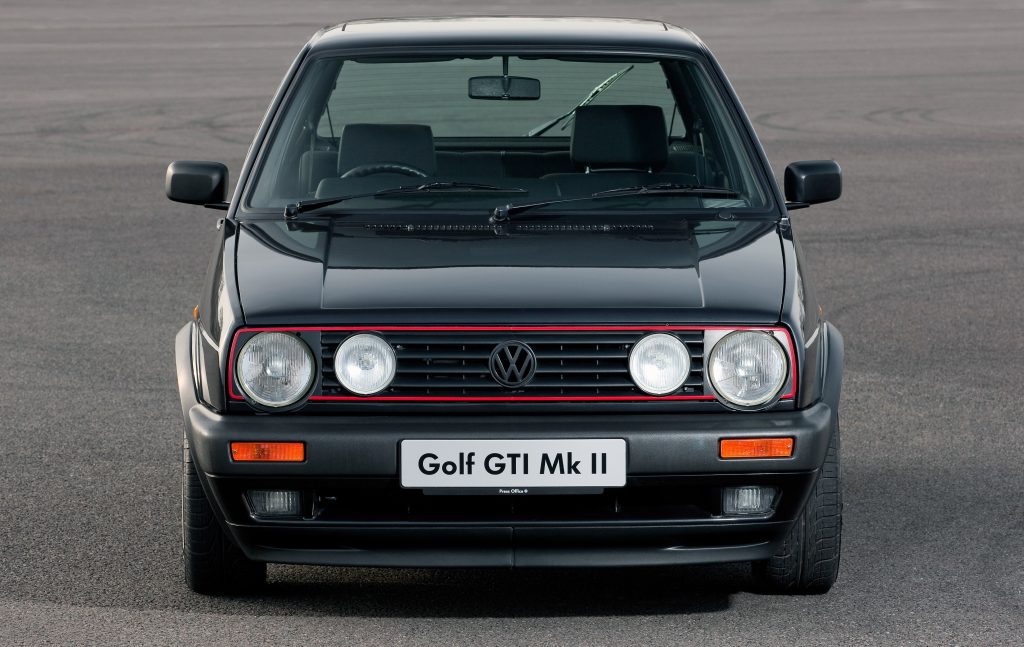
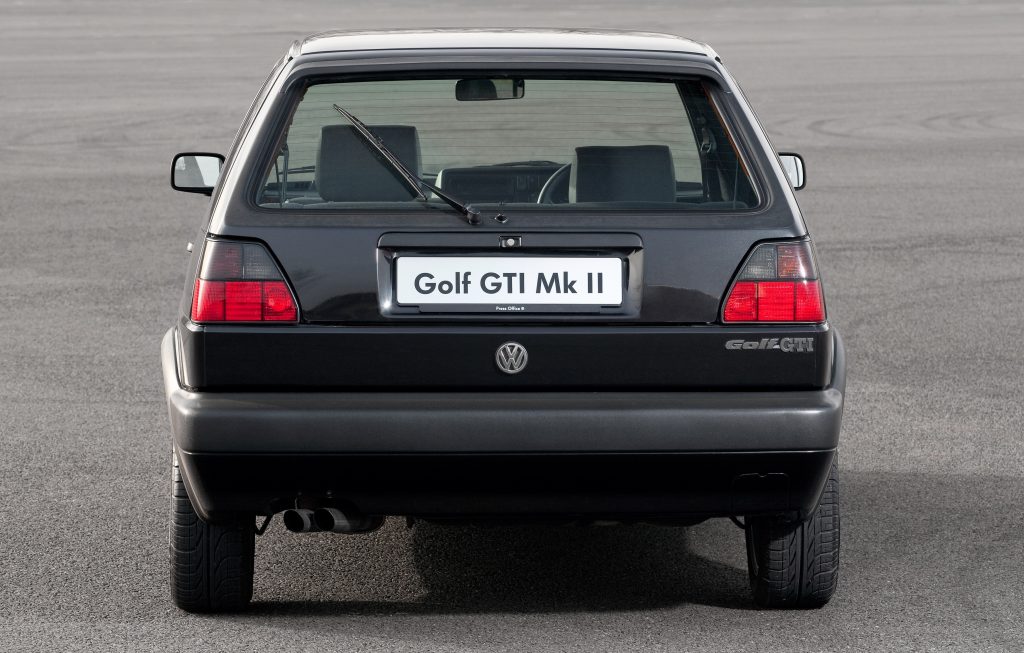
On paper, the biggest difference between 8v and 16v models was the 0-60mph time: 8.7 seconds for the 8v and 8.0 seconds for the 16v. On the road, the gap was more marked as the 8v enjoyed a broad spread of power, while the 16v felt more peaky so it was only getting going at 5000rpm. No matter, it kept the Golf GTI equal to its rivals with goodies such as standard ABS brakes and a 130mph top speed without resorting to turbocharging. Not that Volkswagen was immune from the lure of forced induction as it offered the Golf GTI G60 in 1990 with a 160bhp supercharged engine. Unfortunately, this model was never offered in the UK, while the Rallye homologation special with the same engine and four-wheel drive was a slow seller and only 5000 were produced to allow the Golf to compete.
Prior to this, VW had made minor changes to the Golf GTI’s appearance, such as larger front door windows that deleted the quarter lights in 1987, but change was afoot in mid-1989 when the ‘big bumper’ model arrived. This freshened up the looks of the Mk2 GTI and also heralded the arrived of a new Central Electric II wiring system, which is identified by the hazard warning light switch moving on to the steering column surround.
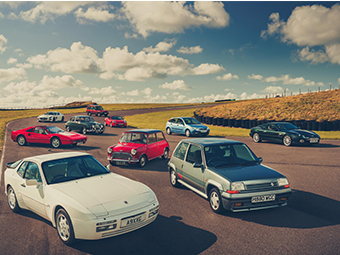
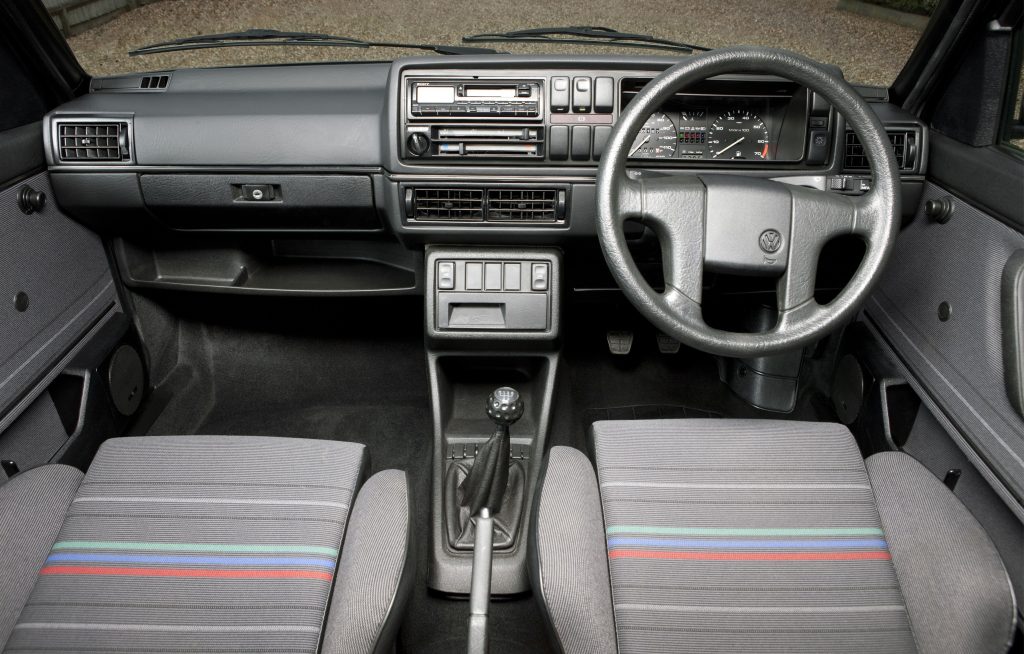
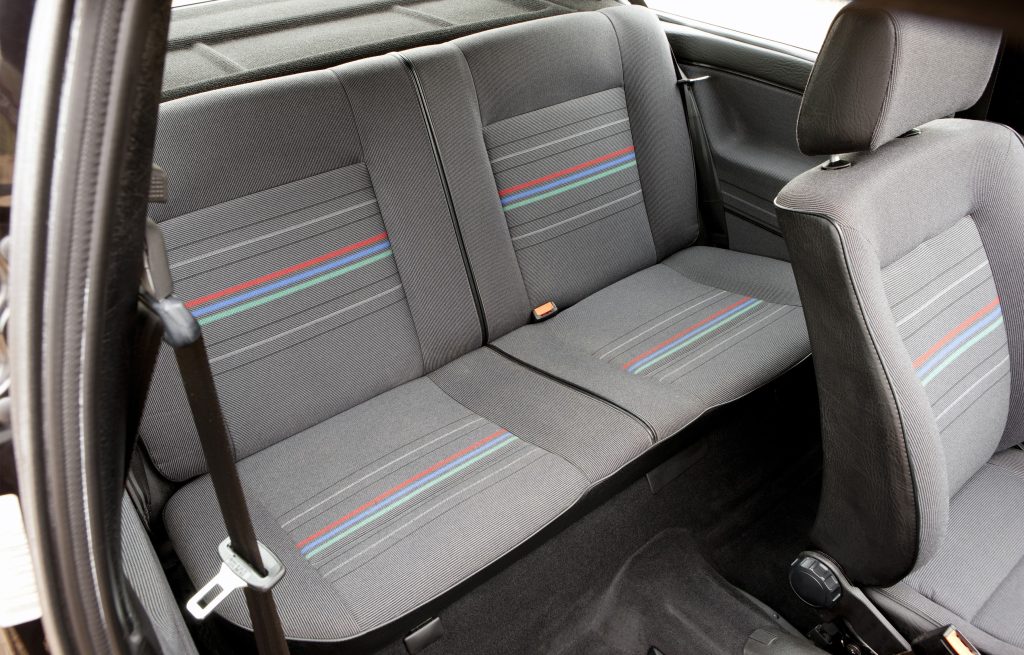
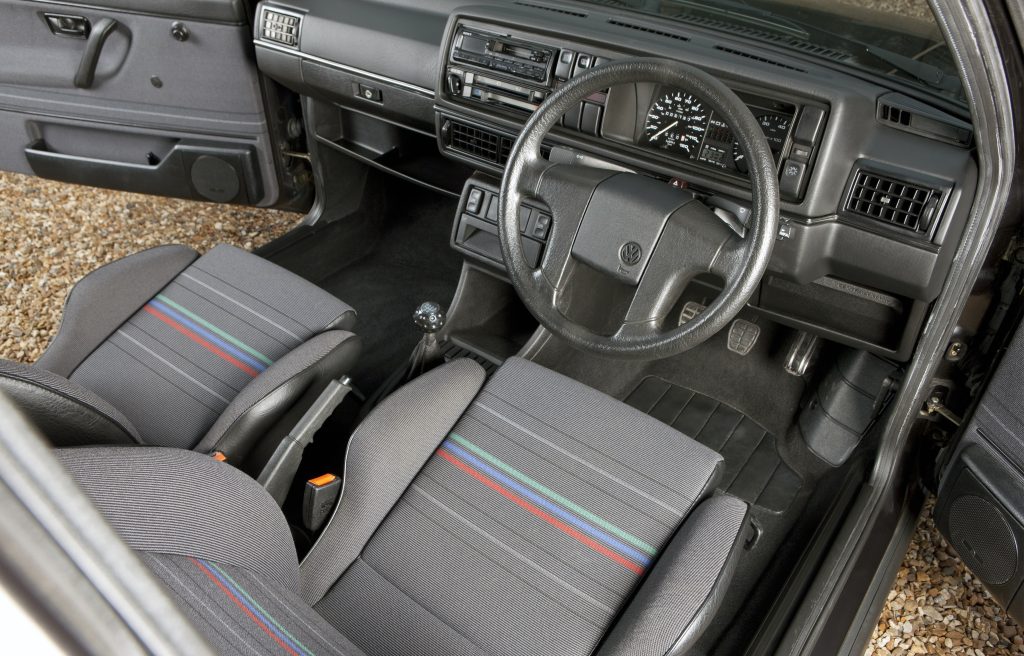
Production of the Volkswagen Golf GTI Mk2 came to a close in February 1992, with around 600,000 produced to beat the near half a million Mk1 made. It was replaced by the heavier, less agile Mk3 model, which meant the Mk2 GTI retained a fond place in many drivers’ minds. In turn, this kept interest and values up to ensure plenty of this practical, entertaining hot hatch survive at affordable prices. Music to our ears.
What’s Golf GTI Mk2 like to drive?
The Volkswagen Golf GTI Mk2 might have had broader appeal than the original Mk1, become more practical, comfier, larger and a little better equipped, but it was still great to drive. Step into one and you’ll be delighted with how simple and engaging it is while also being instantly familiar. Hot hatches of this era really are a sweet spot of analogue involvement combined with decent reliability, easy starting, and fine ergonomics. True, the Golf GTI’s dash can look a bit slabby with its unrelenting cliff of black plastic, but the gauges are a lesson clarity and all of the switches are just a finger flick away. On top of that, the dimpled golf ball gear shift feels great and slots through the five ratios slick and fast.
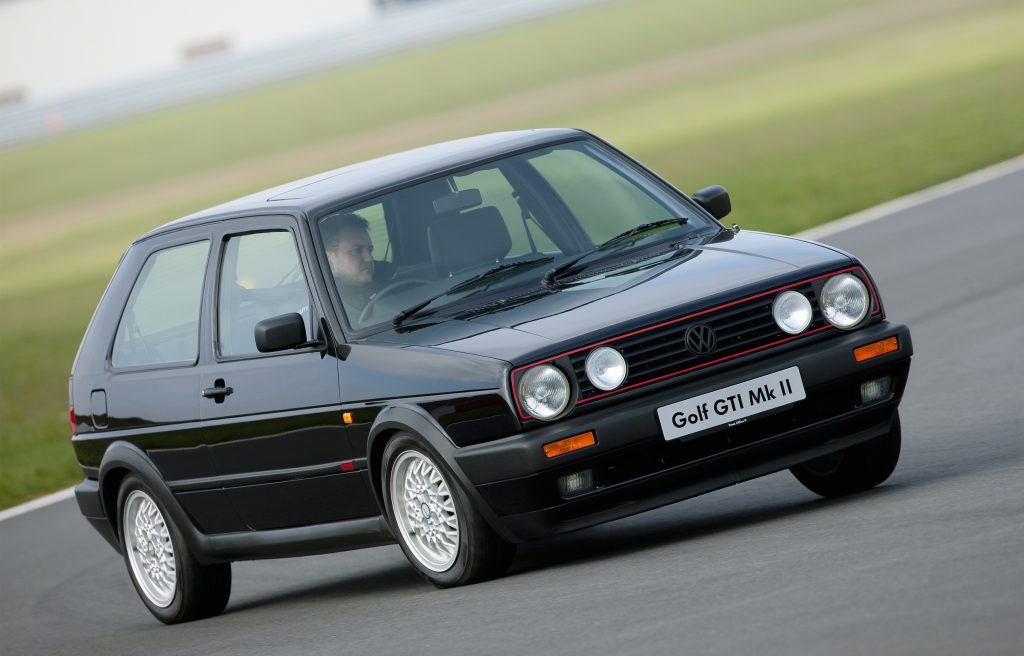
Fire up the 1.8-litre engine and there’s nothing dramatic about its note. Once warmed up, the 8v sounds a little more eager and it definitely offers more low-down urge for town driving and general pottering. Against the clock, the 16v has the edge on time but does demand to be driven with a lot more revs to get the best from it. For a Sunday morning blast, that’s a lot of fun but for all-round usability we’d veer towards the 8v as you won’t really notice its 27bhp deficit. That’s largely because the 8v is only 7lb ft down on torque to the 16v’s 124lb ft. It also helps the simplest three-door 8v tips the scales at just 920kg compared to a fully loaded 16v five-door’s 980kg.
This is splitting hairs, in all honesty, as all Mk2 GTIs are huge fun, and especially so when you reach corners. Unlike a Peugeot 205 GTI that requires a deft approach into bends to avoid the rear end moving out of line, the Golf is more planted in its approach. The VW is also able to put down its power cleanly without the tyre scrabble of many turbocharged hot hatches of this period. The lack of drama has led to accusations of the Golf being a bit dull to drive, but the fact is it’s just massively capable and fluent. It’s not without some shortcomings, though. The steering in unassisted models needs 3.7 turns from lock-to-lock, so be prepared for more work at the wheel than you would expect in a sporting car. Also, the brakes are not as full as feel as a 205 GTI’s, though the all-round discs will pull you up without any alarm. Later cars with ABS as standard feel much the same.
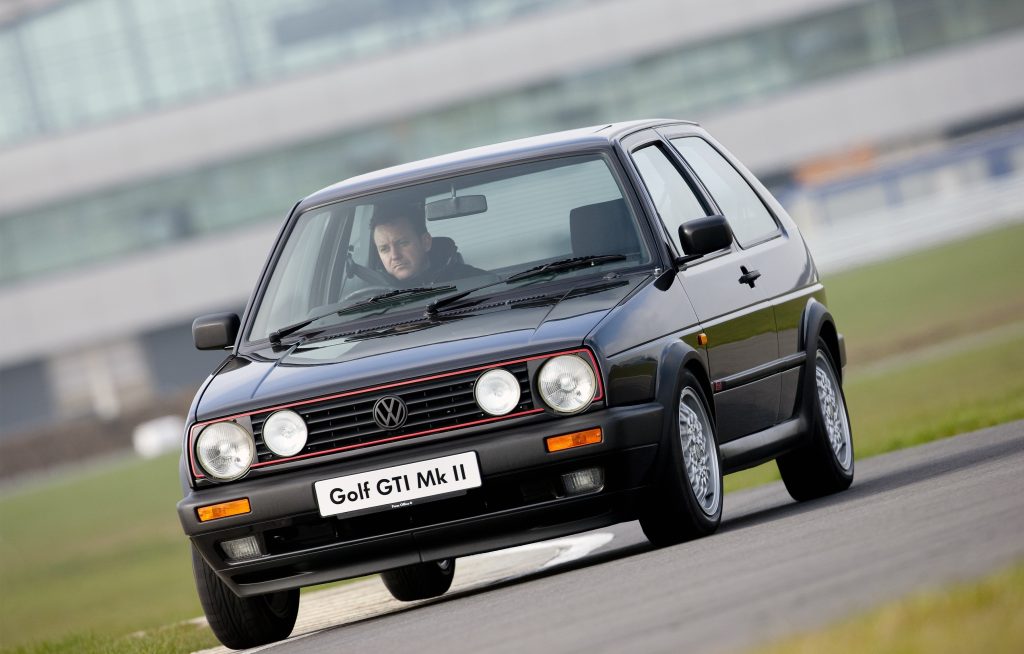
Those points aside, the Golf GTI Mk2 is vary able on the road. You won’t wince at the sight of potholes as standard suspension and wheel sizes soak up all of this. It’s decently quiet at motorway speeds (for a car of its time), and there’s enough room for you and the family plus a big picnic hamper and kit.
How much does a Golf GTI Mk2 cost?
We’ll leave out the G60 model from this as it’s too rare in the UK to give accurate data for. What we can say is a solid 8v model will cost around £7000 for one you can hop in and use right away. It will need some improving, though, so reckon spending nearer £9000 for a decent car. That rises to £15,000 for smart examples, while show-ready cars are fetching £21,500 in either clean, original spec or lightly modified cars – the VW scene is far more accepting of uprated cars than many corners of the classic car world.
If you want a 16v version of the Golf GTI Mk2, you should add around 10% to the prices above. Find a Rallye for sale and prices for sound cars begin at £11,000 and rise to £35,000 for the best.
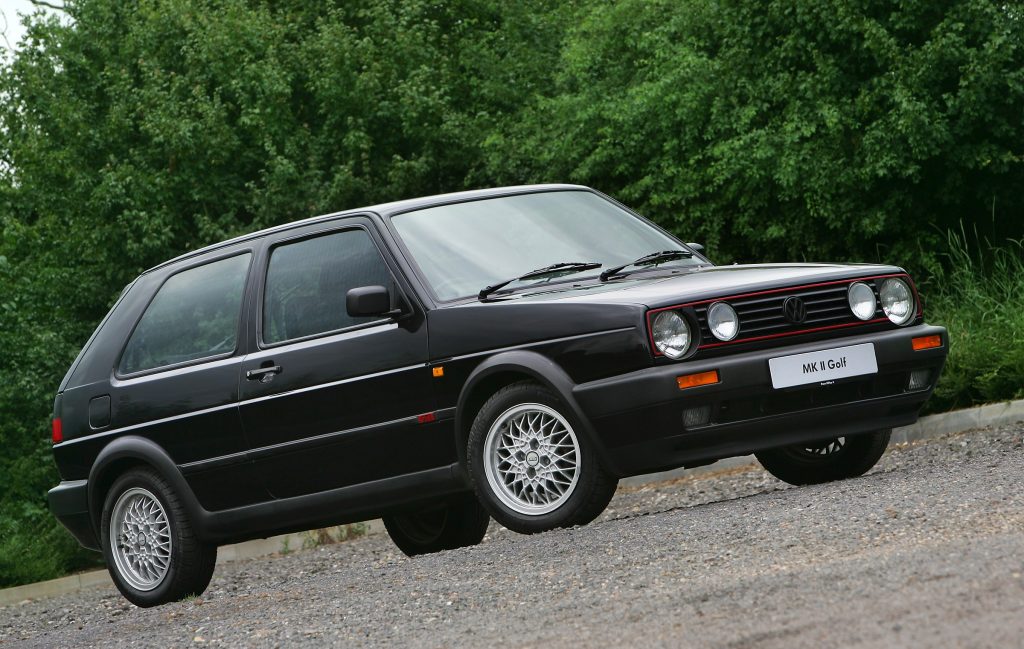
What goes wrong and what should you look for when buying a Golf GTI Mk2?
A good deal of Volkswagen’s reputation for making solid cars stems from the Golf Mk2, and rightly so. It was a clear step up from its competition in quality terms when new, and this has helped plenty make it through the doldrums of the used car market and into the classic scene. However, that doesn’t mean you can buy a Mk2 GTI with impunity.
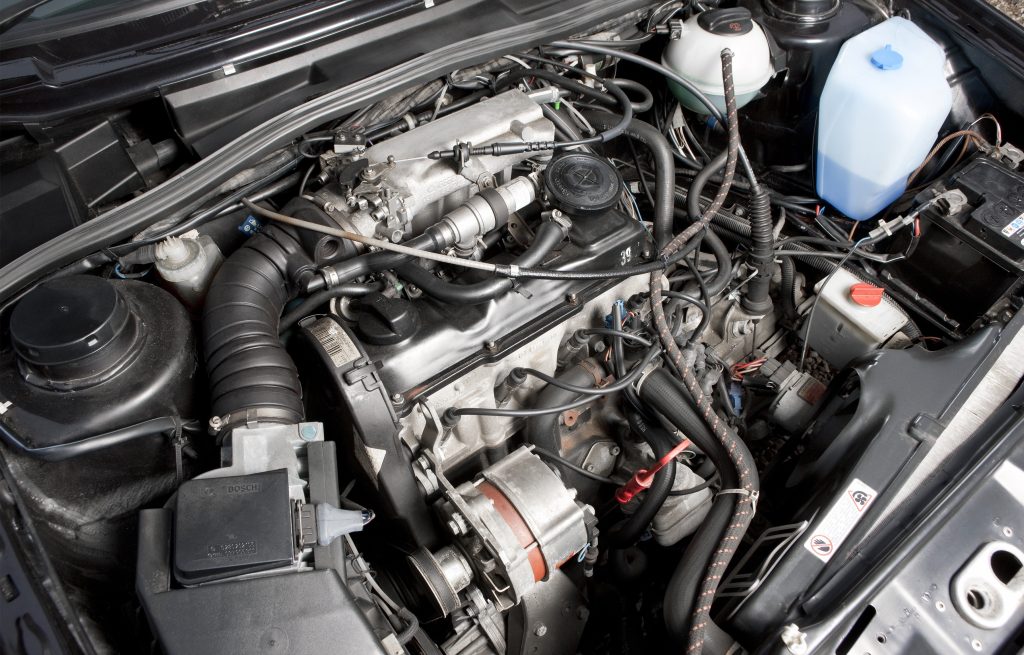
As with most classics, you should start with the state of the body and metalwork. The Golf will show up most of its rust-prone areas quite clearly, so look around the sills, door bottoms, front and rear valances, screen edges, all around the front bulkhead, petrol filler cap surround, and wheelarches. You should also poke around the jacking points and battery tray for signs of rust. Use a torch to look up into the front subframe for rot. However, the one place you might find trickier to inspect is the wheelarches as they have plastic liners that can hide rot, unless a seller is willing to remove these. IF the car has a sunroof fitted, look closely around its perimeter for corrosion.
If that all sounds like a lot of rusty trouble, don’t panic as the Golf Mk2 is surprisingly corrosion resistant. There’s also good news on the engine and gearbox front because the five-speed manual transmission is strong – just check it goes smoothly into second gear as the synchromesh can wear.

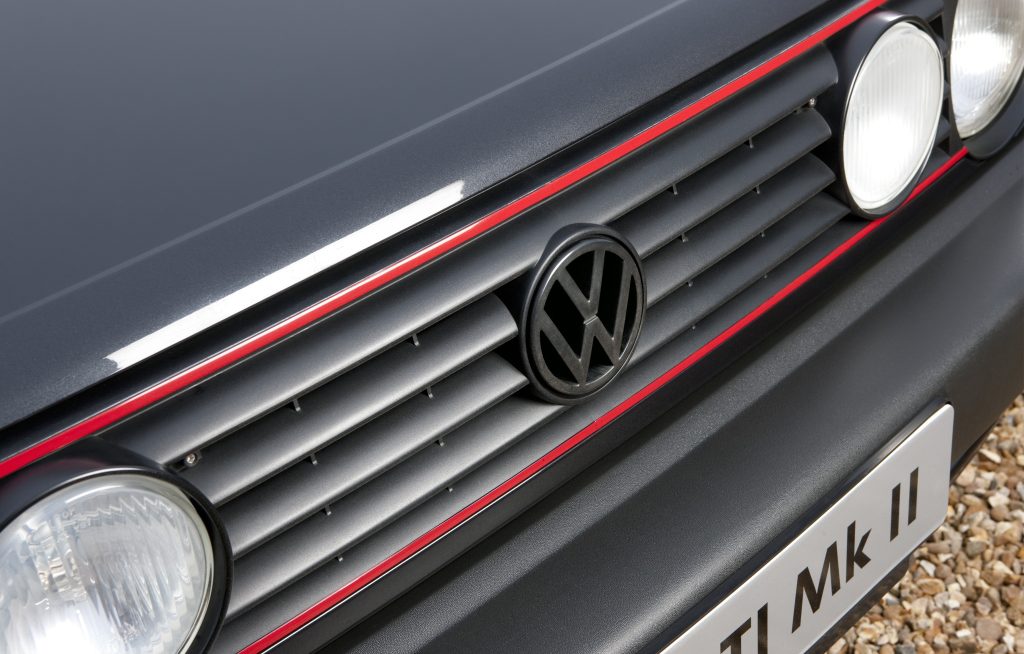
All of the engine options are robust, so it’s down to looking for smoke on start-up, acceleration, and the overrun to flag up any wear. Worn suspension is not unusual but is easily resolved as replacements for damaged, gaiters, bushes, springs and shock absorbers are all available. Uprated and lowered suspension kits are common on the GTI, so be sure you are happy with how the car sits, rides and handles if it’s fitted with these components. The brakes are easy to service, while the power steering pump in cars with this fitted can become noisy, which means a rebuild or replacement.
Volkswagen fitted a variety of wheels to the Mk2 GTI, so purists will be keen to make sure any car is sitting on the correct wheels. However, they are easy to swap, upgrade and restore, even the desirable BBS single and two-piece split rim alloys. Similarly, make sure any car has all of its exterior trim attached as some parts are now difficult to source. Interior trim is hard wearing and most have black plastic dashes that don’t generally crack or split in the way that many 1980s cars can suffer from. Recaro front seats are a sought after option, but the standard seats are comfortable. Foam and upholstery can both be replaced thanks to a good supply. Saggy headliners are a common issue with the Golf, but new ones are on offer and it’s a DIY job to install.
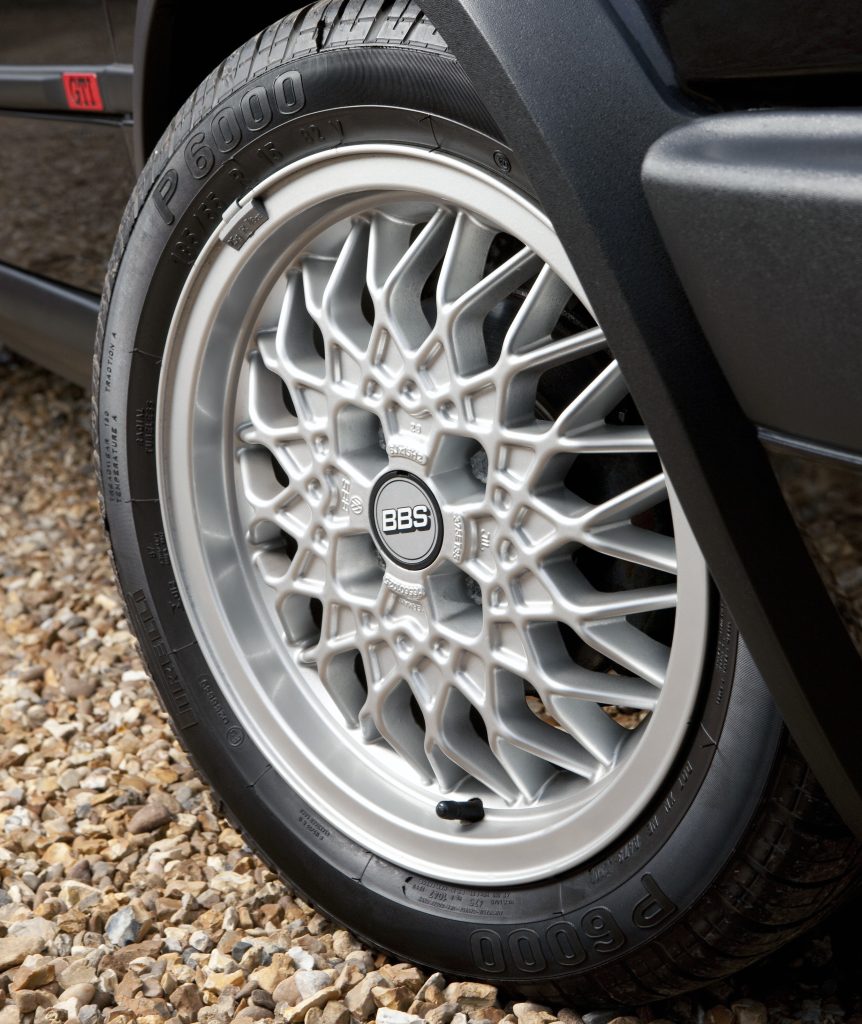
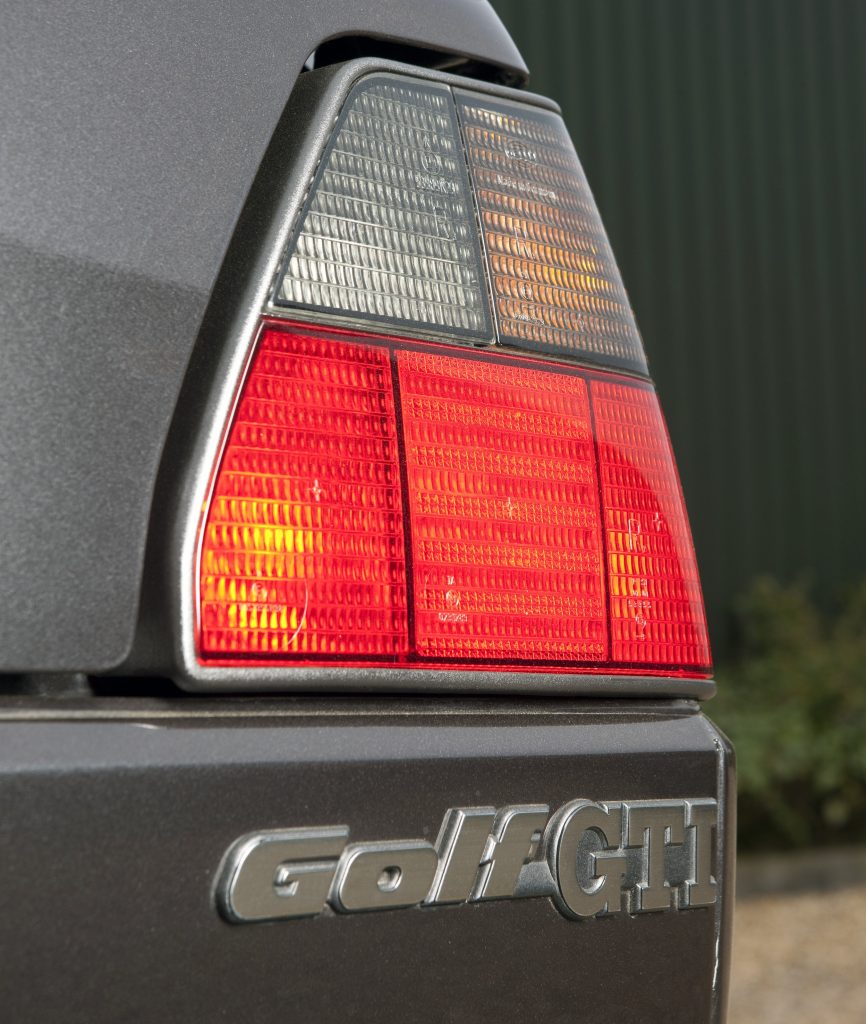
Lastly, check the electrics work in any car, especially if it has central locking as this can fail and leave you stranded without access to the petrol filler cap. Many GTIs will have had aftermarket stereos and alarms fitted, so check closely for a rat’s nest of excess wires and connectors.
Which is the right Golf GTI Mk2 for you?
We’d steer clear of any Volkswagen Golf GTI Mk2 that’s been modified unless you’re keen on this type of car and completely confident the work has been carried out properly. Conversions to the Audi 1.8 T turbocharged four-cylinder and VW’s VR6 motor were once very common, but check the quality of the work. Conversely, we would be happy to see a car with improved brakes fitted – so long as there are receipts to guarantee the work.
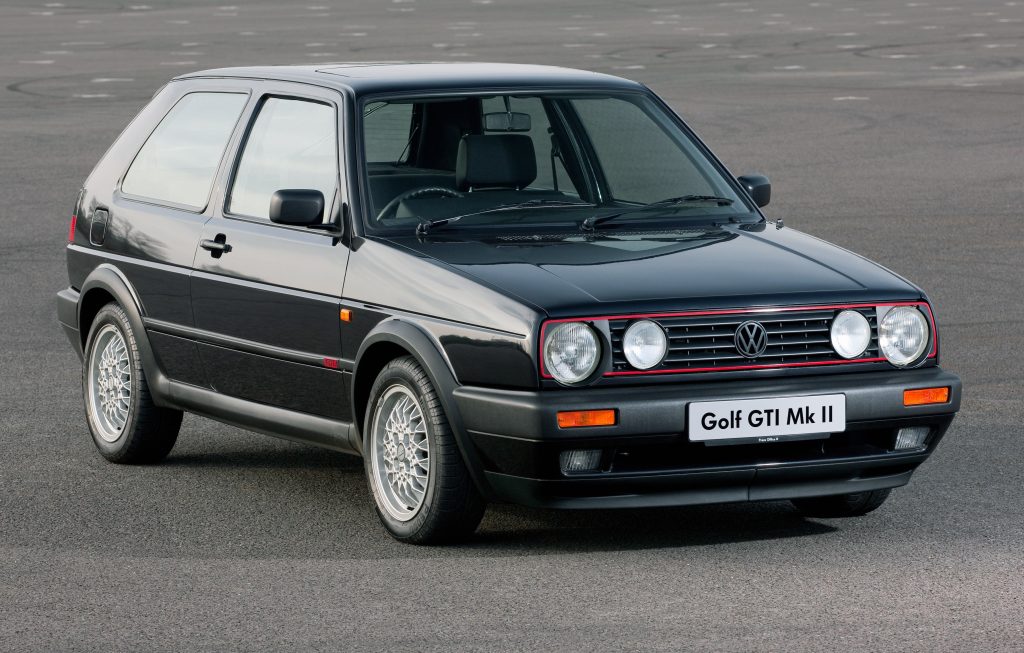
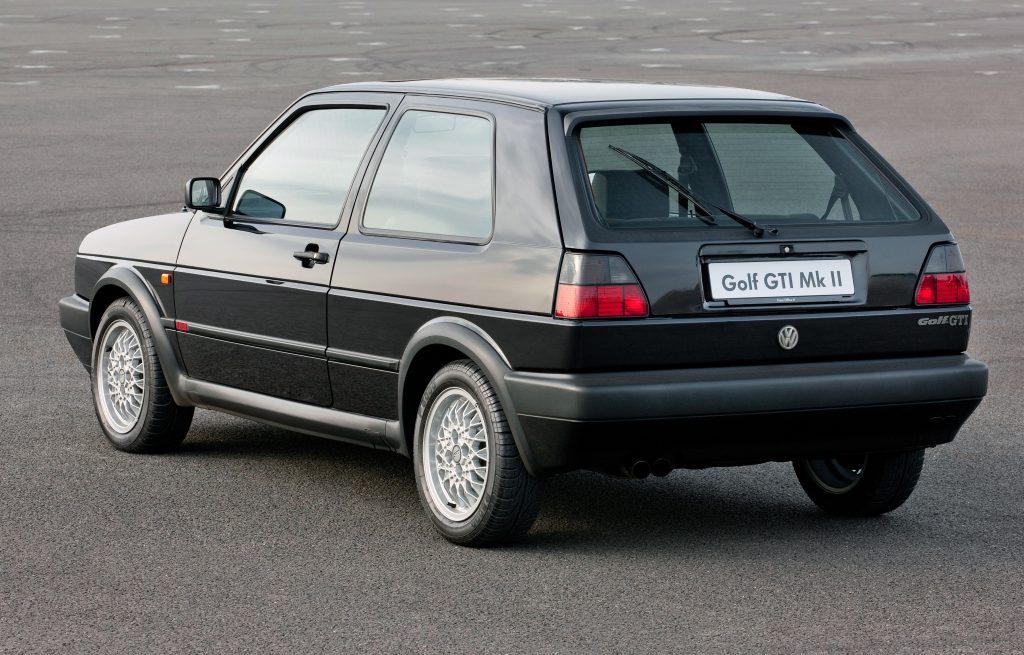
Beyond this, the two big decisions are three- or five doors, and eight- or 16-valve engine. The door count will be down to personal choice and the quality of the car you’re looking to buy. As the lightest option, we’d lean towards a three-door for the keenest driving experience. When it comes to engine choice, we love the zing of the 16v when it’s working high in its rev band, but for all-round enjoyment we’d look for an eight valve car thanks to its broader spread of power across the rev range.
More stories on the Volkswagen Golf GTI
The Birth of a Legend: The Volkswagen Golf GTI
Buying Guide: Volkswagen Golf GTI Mk1
Which Mk1 or Mk2 is Right for You?
